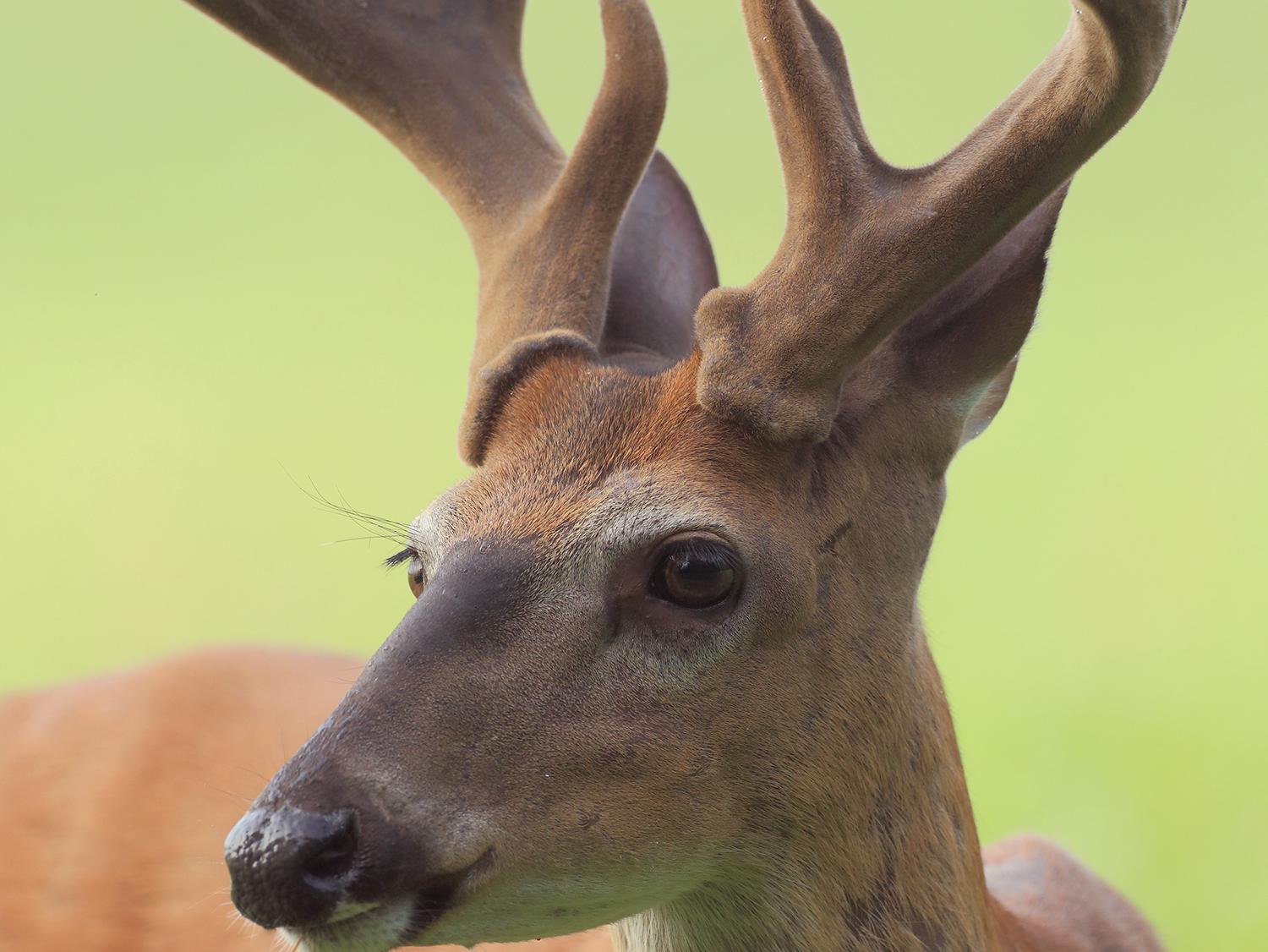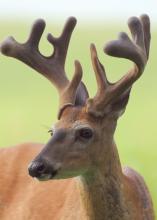Information Possibly Outdated
The information presented on this page was originally released on January 29, 2016. It may not be outdated, but please search our site for more current information. If you plan to quote or reference this information in a publication, please check with the Extension specialist or author before proceeding.
Why bucks shed their antlers
STARKVILLE, Miss. -- Nothing elicits wonder and fascination in the minds of deer hunters more than antlers.
Everyone can remember getting a case of the “goose bumps” during an encounter with an antlered buck, and many people remain captivated by antlers throughout their lives. So, why do deer have antlers?
Often, people think bucks have antlers to fend off predators or to impress girlfriends. While both of these reasons may be true to some small extent, the main reason bucks have antlers is to fight with other bucks for dominance. Antlers are like a football helmet that protects a buck’s head during battle. Antlers also provide leverage when bucks engage in a shoving match to determine which is the strongest.
As spring approaches, you may find a buck’s shed antler in the field. Questions always arise about the antler cycle of deer. In this column, I want to explain the antler cycle and discuss a few factors that influence premature shedding of antlers.
White-tailed deer belong to a taxonomic group of animals called “cervids,” which include, but are not limited to, other deer species such as mule deer, elk, moose and caribou that grow and shed antlers annually. This annual process differs from another group of animals known as “bovids,” which include bison, goats, muskox and sheep. Bovids grow horns, which never shed and grow continually.
Antlers are made of true bone, while horns are made of keratinized hair overlaid onto a boney core. Nothing makes a deer biologist cringe more than when he hears, “Check out the horns on that deer!” Deer have antlers, not horns.
The length of daylight in a 24-hour period, called a “photoperiod,” controls the normal antler cycle of deer. Changes in photoperiod stimulate a buck’s testicles to produce the male hormone testosterone. Fluctuating levels of testosterone in the bloodstream activate growth and shedding of antlers. During spring and summer, testosterone levels are relatively low as antlers are growing. The growing bone is covered with a tissue called velvet.
As fall approaches, the length of daylight decreases and the production of testosterone increases to prepare the bucks for the breeding season. Higher testosterone levels cause bone growth to stop. As the antlers harden and the velvet dries, it is removed when bucks rub their antlers on trees and saplings. The photoperiod begins to increase as the breeding season comes to a close, and testosterone levels decline once again.
In Mississippi, bucks normally shed their antlers during February and March, and the process starts over again.
People often contact me in January to ask why bucks in a particular area are shedding their antlers early. Shedding dates of individual bucks vary widely, with some shedding early and some later. However, bucks that experience nutritional deficiencies will commonly shed their antlers early. Also, older, dominant bucks that are in poor nutritional condition after running themselves ragged during the breeding season may shed their antlers early.
Chronic disease that weakens a buck also has been associated with early antler shedding. I have already heard reports of bucks in the flood zone of the Mississippi River shedding their antlers, which is most certainly related to the stress of floodwaters pushing them into unfamiliar territory and concentrating too many deer in a small area. But rest assured, these bucks will recover when the water recedes, and they will be in good condition next year.

Editor’s Note: Extension Outdoors is a column authored by several different experts in the Mississippi State University Extension Service.






